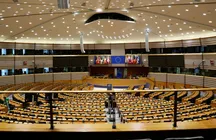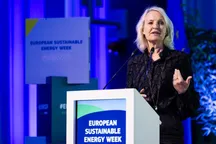As political leaders from many countries around the world (albeit with the absence of key players like the US President or von der Leyen) strive to reach the usual agreement at the climate summit, the draft agreement for COP29 has meanwhile been leaked. The provisional agreement seems to aim at pleasing everyone, as difficult as that may be.
At the heart of the document published today, on the last day of COP29 taking place in Baku, Azerbaijan, is the issue of climate financing, a point on which countries from the Global South and North consistently struggle to find a common position. And, although the draft attempts to outline two distinct targets—one desired by richer nations and the other by developing countries—this year's debate does not seem to be an exception.
What the COP29 Draft Proposes for Climate Finance
Currently, if the content of the COP29 draft agreement is confirmed, leaders have proposed two objectives for climate finance, with one being more explicitly stated than the other.
Starting with the more explicit one desired by richer countries. It is the target, contained in Article 8 of the document, that requires developed nations to take the lead in providing $250 billion annually by 2035 to assist poorer countries in climate action. Among the governments expected to "lead" the financing are the European Union, Australia, the United States, the United Kingdom, Japan, Norway, Canada, New Zealand, and Switzerland. However, it should be noted that it is not explicitly stated that only developed countries should contribute, implying a different approach from previous summits where only the most developed nations were expected to bear the climate financing burden, despite maintaining the principle of shared but differentiated responsibilities.
The second objective, however, hoped for by more vulnerable countries, is contained in Article 7 of the draft and "invites (therefore does not 'require') all actors to collaborate to increase financing to developing countries for climate action, from all public and private sources, up to at least $1.3 trillion annually by 2035". The document, in particular, suggests that developing countries provide additional contributions on a voluntary basis "also through South-South cooperation," to supplement climate finance targets. It is also worth noting that the $1.3 trillion target is more in line with economists' recommendations, who suggest that developing countries should have access to at least $1 trillion annually by the end of the decade.
Regarding the source of financing, the draft (referring to the $250 billion target) suggests that it should be drawn "from a wide range of sources, public and private, bilateral and multilateral, including alternative sources." An aspect disliked by developing countries, who would prefer to prioritize grants over loans.
Furthermore, although the $1.3 trillion annual target is certainly more in line with what developing countries—who are also generally the most affected by climate change—are requesting, they are likely not to accept the fact that their involvement as responsible actors in providing financing is explicitly stated (albeit on a voluntary basis).
Another point, finally, addressed by the COP29 draft agreement is how much of the financing should be allocated to mitigation actions and how much to adaptation to climate change, for which it requires an "equilibrium" to be identified.
The climate summit is expected to conclude in the Caspian Sea city by the end of Friday, although previous COPs have traditionally overrun the scheduled times.
Translation AI assisted







